Introduction
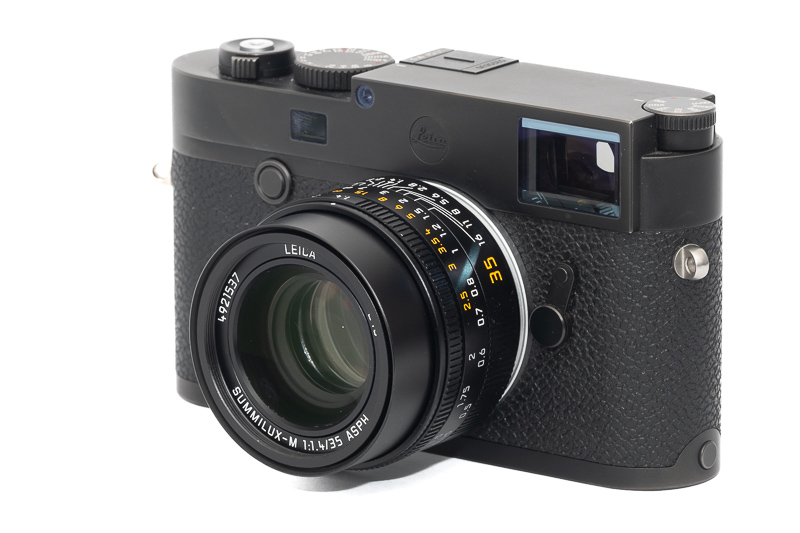
In 2022 Leica started updating some of their f/1.4 Summilux-M lenses. The first lens to receive this treatment was the Leica 35mm 1.4 Summilux-M Asph (now often referred to as “FLE MK II”). While the optical design seems to have remained mostly the same, the new lens features a different casing design and also focuses much closer. It is public knowledge: I was not a big fan of the first generation of this lens, so let’s find out if the seemingly minor update was enough to sway the scale!
Sample Images
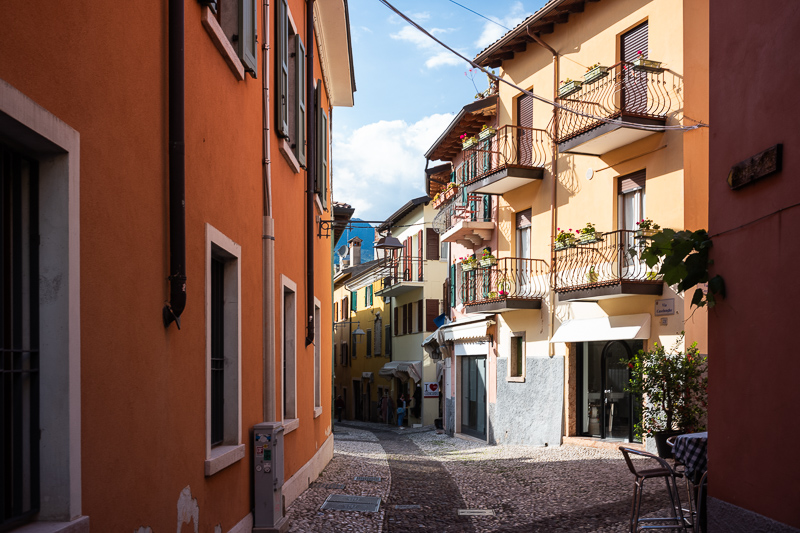

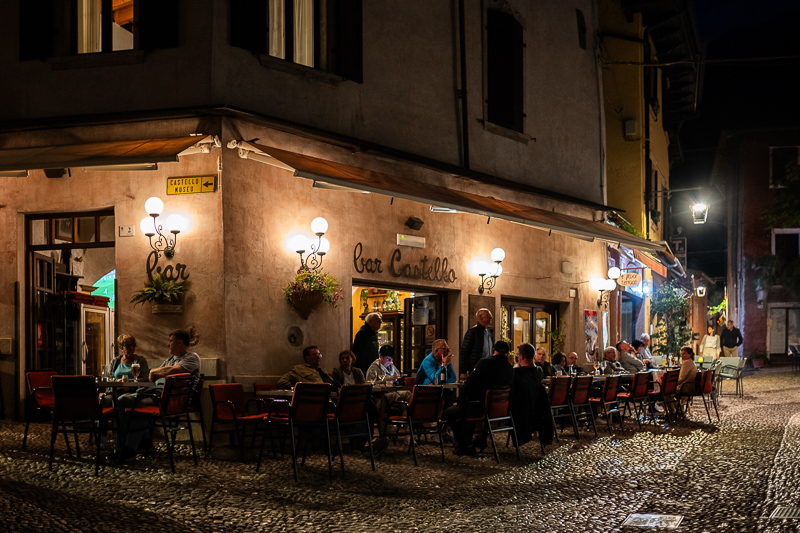
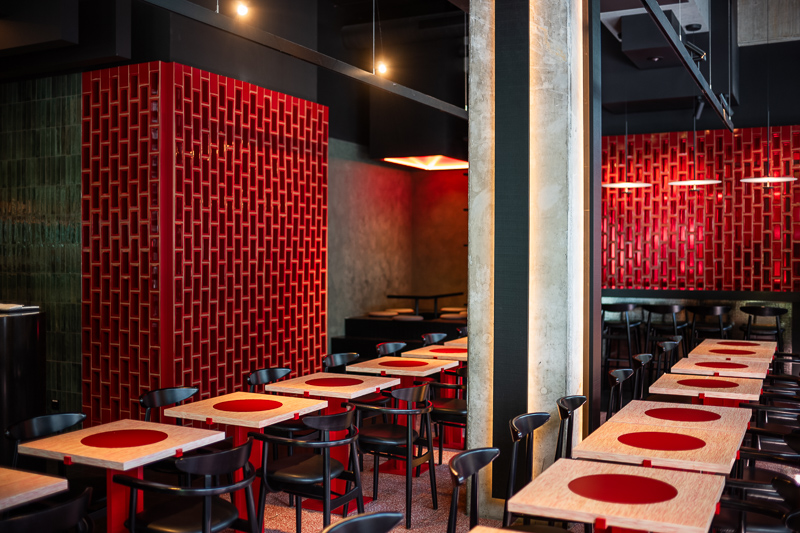
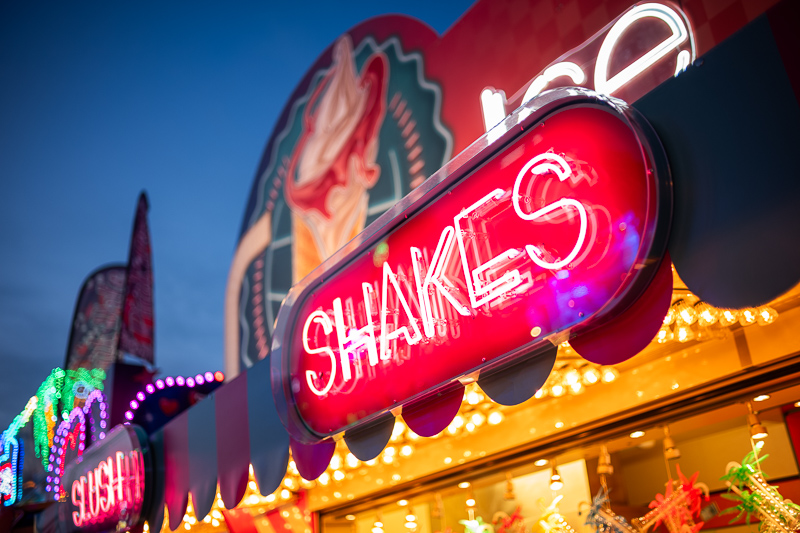

You can find most of the sample pictures in this article in full resolution here.
Contents
- Introduction
- Sample Images
- Specifications / Version History
- Disclosure
- Handling/Build Quality
- Vignetting
- Sharpness
- Flare resistance
- Coma
- Distortion
- Bokeh
- Sunstars
- Chromatic aberration
- Conclusion
- Alternatives
- Sample Images
- Further Reading
- Support Us
Specifications / Version History
The original Leica 35mm 1.4 Summilux-M Asph had been released in 1994. It has been updated with a “floating elements” design in 2010, which is why it is often being referred to as Leica 35mm 1.4 FLE. In 2022 this lens has again been updated, this time with a different casing design and a shorter minimum focus distance. Throughout this review I will therefore refer to this new lens as “Leica 35mm 1.4 FLE MK II”. Its full specifications are:
-
- Diameter: 58 mm
- Field of view: 62.5° (diagonally)
- Length: 46 mm
- Weight: 337g (without hood and caps)
- Filter Diameter: 46 mm
- Number of Aperture Blades: 11 (inwardly curved)
- Elements/Groups: 9/5

- Close Focusing Distance: 0.40 m
- Maximum Magnification: 1:8.8 (measured)
- Mount: Leica M
buy from ebay.com | ebay.de | B&H (affiliate links) for $5395
Disclosure
A good friend and long time reader lend me this lens for a few weeks to write this review. Thanks a lot!
Handling/Build Quality

Generally Leica uses nice materials for their lenses and the tolerances are tight. My 37 years old 90mm 2.0 pre Asph still looks and feels like new.
This 35mm 1.4 also feels like it is an all metal construction and all the markings are engraved and filled with paint.
The focus ring travels 90° from infinity to the click-stop at 0.7 m and then another 90° to the minimum focus distance of 0.4 m and is equipped with a focus tab. Unlike the sample I had of the first generation lens this one’s focus ring features an even resistance.
The aperture ring has very distinct and equidistantly spaced half-stop click-stops and travels ~100° from f/1.4 to f/16. As is the case for many modern Leica M-mount lenses I have tried, the aperture ring turns a bit past the f/1.4 mark and you can also see the diaphragm opening a little more. I don’t see this having an actual effect on the light gathering capabilities, but it feels a bit like sloppy engineering.

When it comes to lens hoods this retractable design is my favorite. You never leave the hood at home and it is always there when you need it. Some of these retractable hoods are a bit wobbly but this is not the case here.
Here the hood can not only be locked in place by a small rotation when it is is extended, but also when it is retracted. Nice touch and an upgrade compared to earlier M-mount lenses with retractable hoods.
Compared to the first generation of the Leica 50mm 1.4 Summilux-M Asph FLE and the Leica 90mm 2.0 Summicron-M (pre-Asph or AA) – which I think are both absolutely beautiful lenses – I am not a big fan of this new casing design, I would have greatly preferred if the lens wasn’t narrower at the front. With the hood extended it even reminds me of the Leica 180mm 3.4 Apo-Telyt R – which is not a good thing.
The Leica 35mm 1.4 FLE MK II is not that small for an M-mount lens, so depending on the distance set on the focus ring and whether the hood is extended or retracted there can be noticeable rangefinder blockage, as can be seen from the comparison above. Here I think the Voigtländer VM 35mm 1.5 Nokton is a better fit to the M-system, as it shows noticeably less rangefinder blockage, almost none when not using a hood.

Here you can see how much smaller the Voigtländer VM 35mm 1.5 Nokton is. It is also noticeably lighter (192g vs 332g). The Voigtländer VM 35mm 1.2 Nokton III is similarly sized and weighs the same despite being half a stop faster. Both the Voigtländer lenses do not feature a floating elements design though.

There are adapters available that allow using this lens on pretty much any modern mirrorless camera. Here I am showing it with the TTArtisan 6-bit adapter so it will be properly recognized as a Leica 35mm f/1.4 lens when used on a Sony camera. When using the Techart LM-EA9 adapter to turn this into an autofocus lens the AF works very well in the central part of the frame but not outside of it – as is the case with most lenses.
Because of the floating elements this lens is also harder (and more costly, should it be out of warranty) to calibrate than your average Leica lens and some third party service providers may not even be able to properly calibrate it.
Vignetting
Light falloff

| f/1.4 | 3.8 EV |
| f/2.0 | 2.7 EV |
| f/2.8 | 2.4 EV |
| f/4.0 | 2.1 EV |
| f/5.6 | 1.8 EV |
| f/8.0 - f/16 | 1.7 EV |
I think I have reviewed all of the modern 35mm 1.4 M-mount lenses and among those the original Leica 35mm 1.4 FLE was the record holder with almost 4 EV vignetting in the corners. I always do my vignetting checks on the Sony A7rII, so that different lenses are comparable and I found this MK II version to pretty much perform the same as the first version, which wasn’t too surprising.
Now where it gets interesting: I had the Voigtländer VM 35mm 1.5 Nokton at the same time as this Leica 35mm 1.4 FLE MK II and in my tests the much bigger Leica showed slightly higher vignetting figures.
Doing some bokeh comparisons on the Leica M10 (see corresponding section) I noticed that the Leica has noticeably less vignetting here, which left me wondering a bit.
I always have the “lens recognition” in the M10 turned off to not have any color shift or vignetting corrections in camera applied to my pictures, but despite that the Leica M10 still applies a forced vignetting and color shift correction to the raw files(!) as can be seen from this comparison, where I took the second picture with the lens slightly unmounted so that the 6-bit code cannot be read anymore:
I also checked if the files might be just flagged for a forced correction (as is the case with many modern zoom lenses with huge distortion) in Lightroom, but also with Raw digger the difference is easily visible.
Long story short:
The vignetting of this Leica 35mm 1.4 Summilux-M Asph FLE MK II is so bad, Leica does not want you to see it and prefers to apply a forced correction to your Raw files instead.
As you will see in the sharpness infinity section the color cast correction is too strong as it introduces a magenta cast which is no better than the green cast it is supposed to fix.

It is recommended to have a look at this article first to get an idea how this brightness graph works.
Optical vignetting
Fast lenses usually show a significant amount of optical vignetting. Without going too much into technical details optical vignetting leads to the truncation of light circles towards the borders of the frame.
In the center of the frame almost every lens will render a perfect circle, but only lenses with very low optical vignetting will keep this shape in the corners.
So in the following comparison we move from the center (left) to the extreme corner (right) and see how the shape of the light circle changes.
I did shoot all three lenses side by side, they were set to 0.5 m and with focusing at a target situated at exactly 0.5 m distance from camera it was ensured the focus distance is actually the same, so the size of the circles is directly comparable.
Unsurprisingly the Leica 35mm 1.4 FLE MK II shows a high amount of optical vignetting. Interestingly the noticeably smaller Voigtländer VM 35mm 1.5 Nokton performs just the same and we also see the difference between f/1.4 and f/1.5 is irrelevant. The Thypoch Simera 35mm 1.4 also shows a similar amount, but unlike these three lenses here it features a high number of rounded aperture blades.
All these lenses make use of aspherical elements. Here the polishing of the Leica looks best to me, as it shows the least obtrusive onion ring structures.
Sharpness
MTF-Graphs
The optical design of this new MK II version is said to be the same as that of the MK I version, looking at their MTF graphs side by side I saw some tiny differences, but these are hardly field relevant.
Generally not much has changed though: high contrast in the central part of the frame, strong fall off towards the corners at wider apertures and a strong mid zone dip.
Sadly Cosina does not provide MTF graphs for their faster lenses, so we cannot compare them directly.
Focus Shift
Now this was a positive surprise. I clearly noticed focus shift with the sample of the MK I version I had and considering this new version focuses closer, I expected this to be even more of an issue here, but this is not the case.
I even checked it at 0.4 m and at 0.7 m and in neither case I noticed focus shift with this MK II version. Has the design been slighly improved for the MK II version after all? Was it sample variation and the tolerances are tighter now? I don’t know.
infinity (24mp Leica M10, 42mp Sony A7rII)

On the Leica M10 this Leica 35mm 1.4 FLE MK II shows a very good performance in the center from f/1.4 and even the corners look pretty good from wide open, but due to the strong midzone dip you have to stop down to f/5.6 for very good across frame performance. The Voigtländer VM 35mm 1.5 Nokton also has a midzone dip and the corners look a bit worse at wider apertures, but by f/5.6 they look pretty similar. Interestingly the Thypoch Simera 35mm 1.4 shows the best performance here, as the midzone is mostly gone from f/2.0.
On the Sony A7rII with its thick filter stack the corners look worse at wider apertures – as was to be expected – but the midzone dip is not as strong. Lenses with floating elements sometimes do funny things. Compared to the Voigtländer VM 35mm 1.5 Nokton and the Thypoch Simera 35mm 1.4 this Leica looks best to me when used on a Sony E-mount camera which should also be the case for Z-mount cameras.
Here I also get the feeling the forced color cast correction on the Leica camera is too strong, as the corners look too magenta to me compared to the central part of the frame.
portrait distance 1.0 m (24mp Leica M10, 24mp Sony A7III)
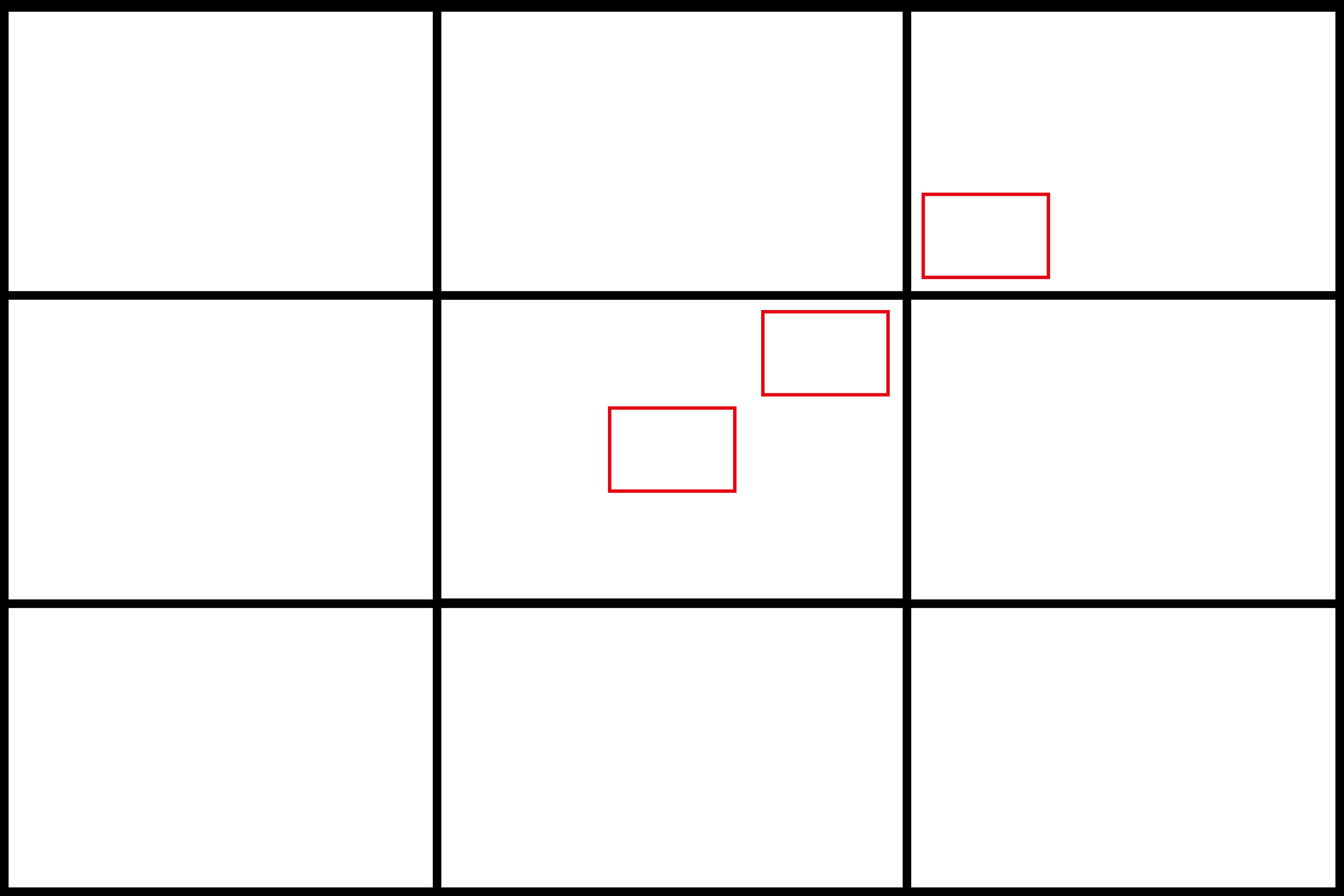
I refocused for every shot and aperture to get the best possible result at different locations in the frame (center, inner midframe and outer midframe).
The circle of the dollar bill is more or less the size of a human eye.
We will be looking at 100% crops from the 24mp Sony A7III and the Leica M10. Both cameras do not have an anti aliasing filter in front of the sensor. Focus distances was 1.0 m.
Leica M10 <—> Sony A7III
The performance at f/1.4 is decent but not great off center. Stopping down to f/2.0 increases the contrast noticeably.
Differences between Leica and Sony are not huge here, but the lens does look better on the Leica off center as was to be expected. In the center it sometimes looks slightly better on Sony which is due to setting precise focus on Sony cameras is noticeably easier.
What about the competition? The Voigtländer VM 35mm 1.5 Nokton and VM 35mm 1.2 Nokton III look worse in the outer midframe, the absence of a floating elements design is probably to blame here. The Thypoch Simera 35mm 1.4 performs very similar.
close (42mp Sony A7rII)
I found it a bit questionable that the first generation 35mm 1.4 FLE had a floating elements design yet only focused down to 0.7 m. This has been fixed and the MK II features a more appropriate minimum focus distance of 0.4 m.
The floating elements do their job. At f/1.4 the image is still a bit soft but still better compared to the Thypoch Simera 35mm 1.4. The Voigtländer VM 35mm 1.5 Nokton actually looks more contrasty as its minimum focus distance, but in its case its only 0.5 m unlike the 0.4 m of the Leica so I call it a draw.
Flare resistance
This is a category where the new manufacturers from China often struggle and where the reknown manufacturers from Japan are hard to beat. When it comes to Leica lenses one would expect that there is enough R&D money left to tackle this problem in a proper way. Sadly all the modern Leica lenses I personally tried were a bit of a disappointment and also the first generation Leica 35mm 1.4 FLE wasn’t great.
At the maximum aperture we definitely see a loss of contrast but merely faint artefacts that should only rarely have the potential to ruin your pictures.
Now stopped down this is a whole different story. It barely matters where in the frame a strong point light source is located, there will almost always be huge artefacts of all kind. Pretty much all the Voigtländer 35mm M-mount lenses perform better in this category, most of them notably so. The Thypoch Simera 35mm 1.4 showed a similar performance.
Coma
When I tested the first 35mm 1.4 FLE I did not have an M-mount camera and many fanboys claimed in the comments that the lens would perform much better on an M-mount camera – which for some categories is of course true. But when it comes to Coma the MK II performs just as bad on a Leica camera as the first generation did on a Sony camera.
Looking at other fast 35mm M-mount lenses the recent Voigtländer VM 35mm 1.5 Nokton and even the half a stop faster Voigtländer VM 35mm 1.2 Nokton III show smaller artefacts at shared apertures. The Thypoch 35mm 1.4 showed a very similar performance. The Voigtländer lenses perform very well from f/2.8, this Leica from f/4.0, the Thypoch needs f/5.6.
Distortion
This 35mm 1.4 FLE MK II shows a wavy distortion pattern. A profile is available in Lightroom to correct this and I also used it for some of the sample pictures. No changes compared to the predecessor here.
Bokeh

I wasn’t really a fan of the MK I version of the Leica 35mm 1.4 FLE in this category, so let’s see if something has changed.
Close Distance


The shorter minimum focus distance is definitely nice to have as it allows for some interesting close ups. Already at these short distances the bokeh is more of the nervous type though – the more you move towards the corners, the more nervous it gets.
Mid Distance



Out of focus light circles that are not located in the center show a lot of outlining and when there are structured elements in the transition zone this can lead to a real mess (see last picture above).
Long Distance




The trend continues at longer focus distances. Despite the floating elements design I also see a bit of field curvature at certain distances, e.g. in the last sample above.
Luckily I had this Leica 35mm 1.4 FLE MK II and the direct competitor from Cosina – the Voigtländer VM 35mm 1.5 Nokton – at the same time, so I did some side by side comparisons.
Compared to: Voigtländer VM 35mm 1.5 Nokton
Caution:
As I did these comparisons on the Leica M10 the camera introduced forced vignetting and color cast corrections to the pictures taken with the Leica 35mm 1.4 FLE MK II, in a fair comparison the Voigtländer VM 35mm 1.5 Nokton actually shows less vignetting.
Scene 1: Forest Close Distance
Scene 2: Forest Transition
Scene 3: Forest Mid Distance
Scene 4: Forest Long Distance
Scene 5: Forest Long Distance Backlit
Scene 6: City Long Distance
Scene 7: City Lights Mid Distance
Observations
What can we learn from these comparisons? Generally the Leica draws a way more nervous and distracting bokeh. This is especially visible in the first three forest scenes but also in the nightly city scene.
Now scene four is an interesting one as it showcases the different field curvature shapes. The Voigtländer’s midframe areas look more out of focus, but the corners are pulled back into the focal plane. So in this scene I call it a draw and same is true for scene six.
I wasn’t a fan of the bokeh rendering of the MK I version when I reviewed it back in 2017 and the only thing that has changed with this MK II version is, that there is even stronger competition now, making this luke warm update look even worse.
Personally I prefer the bokeh rendering of the Voigtländer VM 35mm 1.2 Nokton III, the Thypoch Simera 35mm 1.4, the Zeiss ZM 35mm 1.4, the Voigtländer VM 35mm 1.5 Nokton and the Voigtländer VM 35mm 1.7 Ultron.
Sunstars
Compared to the first generation 35mm 1.4 FLE the number of aperture blades has been increased from 9 to 11. Due to this high number of aperture blades I did not expect to see distinct sunstars, but the production tolerances for Leica’s diaphragms seem to be pretty tight, as we see decent sunstars with an even length of the rays from f/8.0 to f/11.
If you want to know more about sunstars have a look at this article.
Chromatic aberration
lateral
Lateral CA are on a low level and easy to correct in post by just one click.
longitudinal
We see here a very typical performance for a 35mm 1.4 lens with rather strong fringing at the maximum aperture that still doesn’t completely clear up when stopped down to f/2.8. The Voigtländer VM 35mm 1.5 Nokton shows a very similar performance at shared apertures.
Purple fringing is also pretty strong at f/1.4 and still not fully gone at f/2.8.
Conclusion
good
|
average
|
not good
|
I am a bit surprised by Leica’s approach to rerelease their 15 year old designs with only minor updates. Generally, improving the minimum focus distance is something I welcome, especially when the lens already features a floating elements design to begin with. But this is still a design from 2010 and I did not see them raise any bar with this new iteration, yet this is exactly what I would expect from their latest flagship 35mm f/1.4 lens. After all, a fast 35mm lens is one of the most popular lenses to M-mount users. And they had more than 10 years to improve it.
The Thypoch Simera 35mm 1.4 has not only shown that a Chinese company can copy its design, in my opinion they actually managed to improve on it in that process (only the optics though, the handling is a different story altogether…).
Cosina meanwhile managed to introduce a 35mm 1.5 lens which performs better in most categories yet is smaller and much lighter. Therefore I also think the Voigtländer better fits the idea of the M-system. They didn’t stop there, they also have a half-a-stop faster 35mm 1.2 in their lineup which is neither bigger nor heavier than this f/1.4 lens. And they didn’t even use their latest hand ground high refractive elements for any of those 35mm lenses (yet).
For about five grand this is the most expensive 35mm f/1.4 fullframe lens I am aware of. I don’t see a performance worthy of that price tag. And judging by the hidden forced digital corrections of vignetting and color cast I get the feeling Leica’s marketing department didn’t see it either.
A lukewarm update of a vastly overpriced lens.
buy from ebay.com | ebay.de | B&H (affiliate links) for $5395
Alternatives
I already reviewed a lot of fast 35mm lenses for M-mount. You can find all their reviews here. These are some popular alternatives to have a closer look at:
Leica 35mm 1.4 FLE MKI:
The performance of this predecessor is pretty much the same. If you don’t care about the improved minimum focus distance – e.g. because you are using an M-mount camera without liveview – you can just as well use this older version.
buy from amazon.com | ebay.com | ebay.de | B&H for $5195 (new) or starting at $3000 (used) (affiliate links)
Voigtlander VM 35mm 1.2 Nokton III:
Some of the latest Voigtlander lenses hit a real sweet spot when it comes to the combination of maximum aperture, image quality and size/weight and this is a good example and also my personal choice when it comes to fast 35mm lenses for the Leica M-mount.
The only category where I see this Leica ahead is off center sharpness at portrait distances at f/1.4 to f/2.0.
buy from amazon.com | ebay.com | ebay.de | B&H for about $949 (affiliate links)
Thypoch Simera 35mm 1.4:
This lens’ optical diagram looks very similar, but actually I found this Thypoch lens to perform better than the “original” in some categories, especially bokeh but also vignetting. I am not a real fan of this lens’ handling though.
buy from ebay.com | B&H (affiliate links) for $699
Voigtlander VM 35mm 1.5 Nokton:
I used both these lenses side by side and compared them in most of the categories. The difference in maximum aperture is completely irrelevant.
Generally this is a slightly slower, smaller and lighter version of the aforementioned 35mm 1.2, but its performance is very similar. Meaning also here the only category where I see the Leica ahead is off center sharpness at portrait distances at f/1.5 to f/2.0.
buy from amazon.com | amazon.de | ebay.com | ebay.de | B&H for about $799 (affiliate links)
Voigtlander VM 35mm 1.7 Ultron:
This lens has already been discontinued and somewhat replaced by the aforementioned Voigtländer VM 35mm 1.5 Nokton, but this is still a really well balanced lens with better off center sharpness at portrait distances and less longitudinal CA – should you care about those things. Some people really hate its knurled focus ring though.
buy from ebay.com | ebay.de for ~500$ (affiliate links)
Zeiss ZM 35mm 1.4:
The last entry of the Zeiss ZM lineup. Very high contrast, better performance at wider apertures but too big and heavy for most M-mount users.
buy from amazon.com | amazon.de | ebay.com | ebay.de | B&H starting at 1600$/1600€ (affiliate links)
Sample Images











You can find most of the sample pictures in this article in full resolution here.
Further Reading
- All M-mount Lens Reviews
- Lens aberrations explained
- Review: Leica 50mm 0.95 Noctilux-M
- Review: Leica 90mm 2.0 Summicron-M
- Follow us on Discord
Support Us
Did you find this article useful or just liked reading it? Treat us to a coffee!
![]()
![]()
![]() via Paypal
via Paypal
This site contains affiliate links. If you make a purchase using any of the links marked as affiliate links, I may receive a small commission at no additional cost to you. This helps support the creation of future content.
Latest posts by BastianK (see all)
- Review: Nikon Nikkor 105mm 1.8 Ai-s - December 28, 2025
- 2025 – Year in Review - December 23, 2025
- Review: Sony FE 70-200mm 4.0 G Macro OSS II - December 20, 2025


















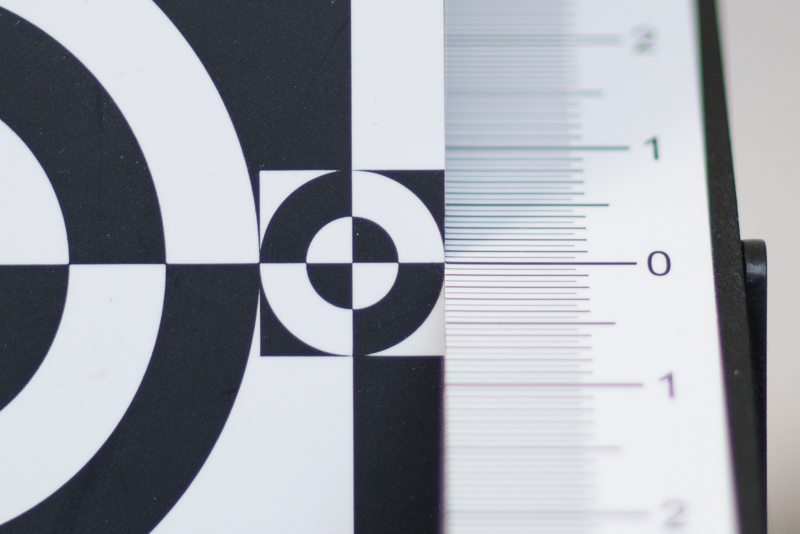
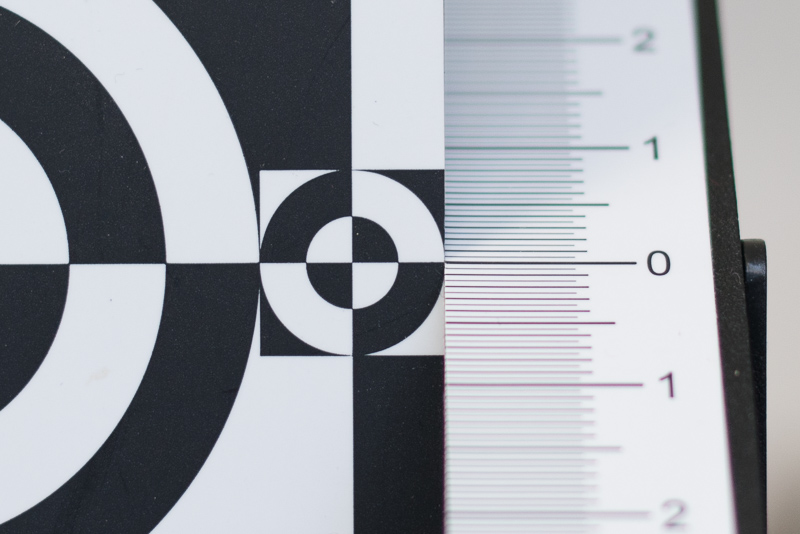

































































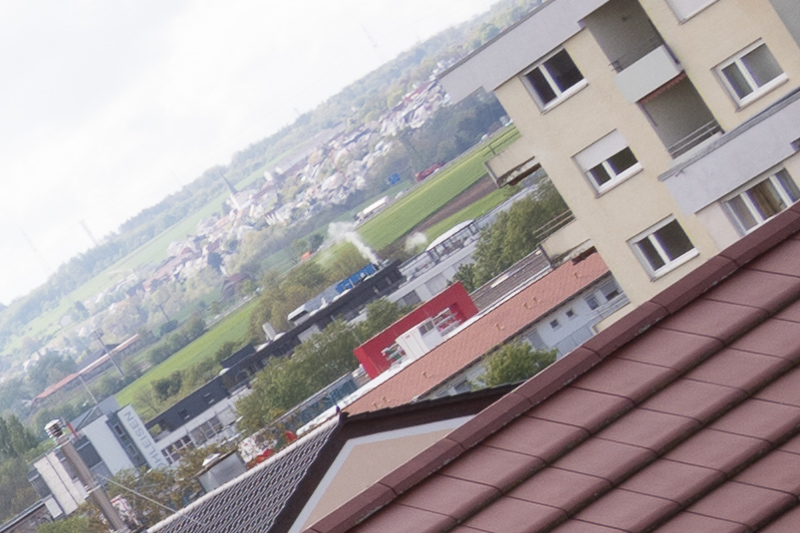






Voigtlander are now mostly in par with Leica, and I love their lenses. Small and practical – they look good too!
I have to say, it does take very nice pictures, especially stopped down. It has the sort of 3D pop that you often see with voigtlander, Zeiss, and Leica lenses, as well as nice colors.
I wonder if over time all of these 3rd party manufacturers will drive down prices to be “merely exorbitant” instead of insane beyond reason. My intuition says not anytime soon because people pay for the brand more than the optics per se. I wonder if you agree.
Thanks for all your wonderful reviews!
Curious. I could test the first 35mm Summilux Asph last summer and it has a wonderful 3d pop look. But I can’t see this look in the photos from the newest model here. Curious.
The very first Asph version. Not the first FLE.
3D pop, from my experience, requires a careful composition whereby the focus point is set at some close-to-mid-distance in the scene so that the in-to-out of focus transitions are strongly evident through much of the frame, but also the incident light be quite strong but not overly diffuse, and portray high contrast. Perhaps the reason 3D pop isn’t obvious is primarily due to the lack of the factors above in most of the provided sample images. There is also the requirement that the lens be both very fast and sharp, which is likely true.
I wasn’t expecting to see review of this lens on this site, kinda surprised in a good way.
100% agree with your conclusion about this lens.
It’s bizarre to see this price tag for this performance.
IMHO Voigtlander is still the best price/value for M system.
Should we expect a review for the new APO Summicron M 35 f/2 ASPH?
Only if someone offers that lens to me. If I had 9k to spend on a lens, I would rather review the Nikon Z 58mm 0.95 🙂
Just curious, how does it compare to the Pearger 35mm F1.4?
I needed to have a look at my reviews to answer that question.
In terms of overall optical performance the Leica is better.
In some categories the differences are very small though (e.g. coma, loCA, vignetting).
This lens has no excuse for the price it demands. I love Leica and their lenses… but it’s simply absurd to buy this lens over the other options. in the US, you can buy an entire 3 to 4 lens Voigtlander kit for the same price as a single Leica lens… with enough left over to take a long vacation in Europe to use them.
As a Leica shooter I would like to say REEEEEEEEEEEEEEEEEEEEEEEEEEEEEEEEEEEEEEEEEEEEEEEEEEEEEEEEEEEEEEEEEEEEEEEEEEEEEEEEEEEEEEEEEEEEEEEEEEEEEEEEEEEEEEEEEEEEEEEEEEEEEEEEEEEEEEEEEEEEEEEEEEEEEEEEEEEEEEEEEEEEEEEEEEEEEEEEEEEEEEEEEEE
Seriously though, nice article <3
I’m not looking for new lenses, but I still enjoy reading your test reports because they are always interesting and the sample images are very much in line with my own taste. I don’t know of anything comparable. So thank you very much and here’s to many more exciting articles!
Keep enjoying the articles!
What about the much more expensive Leica 35mm 1.4 aspherical predecessor (*1991) with 2 aspherical surfaces?
We will find out when Light Lens Lab sends me their replica.
Apart from that I am not really interested in lenses that only 5 people on the planet can afford.
I have this one and it is my most frustrating leica lens and the only one I’d consider to sell. Under the right conditions, the outcome is very special, but it has huge distortion and strong color cast (on a M11). My last purchases have been voigtlanders and LLLs. I don’t see myself buying (brand new) leica lenses ever again. And, btw, there’s an ecosystem I’m enjoying more and more and could be the main one for me in the future: Nikon Z. They only need to downsize their lenses.
I don’t know why the author likes Voigtländer so much and doesn’t like Leica, maybe it’s self-inflicted or some other interest.
I have this lens and before that I had the first version and the most important thing for me is that it is a damn pleasure to shoot with, it is for pleasure that people buy Leica. I have tried several Voigtländer lenses – they are not enjoyable. That’s it.
It may be a strange concept to you, but there are people that buy lenses for their image quality, and the Leica doesn’t look great in that regard.
Simply put, the reviewer editing style doesn’t highlight the qualities of Leica lenses (tonal separation/contrast within thinner and thinner nuances of light frequencies, focus-out of focus gentle fall off, warm yet dinstinct colors). I tried a 35 fle in a leica store and I couldn’t believe my eyes for how much it was rich and 3D. Those days were the ones I was using the 7artisans 35 1.4 as well, claimed to be on par with the leica on this website, while being a decent lens, that is completely untrue to my eyes.
Sure, if you test lenses with brick walls and destroy the colors in post production with your daily photography… yeah, I guess a 7artisans may look similar to a Leica.
Or maybe you may think that a super sharp but flat sigma art pwns a Leica lens… again, if you edit your images crunching the tones and destroying the colors, maybe yes. And id that is your style you may really feel better with cheap but sharp glass.
Es ist nicht sehr nett von Ihnen, Leser zu beleidigen, die nicht mit Ihrer voreingenommenen Meinung übereinstimmen
Wer soviel dummes Zeug schreibt, wovon das Meiste erfunden ist, der muss darauf hingewiesen werden.